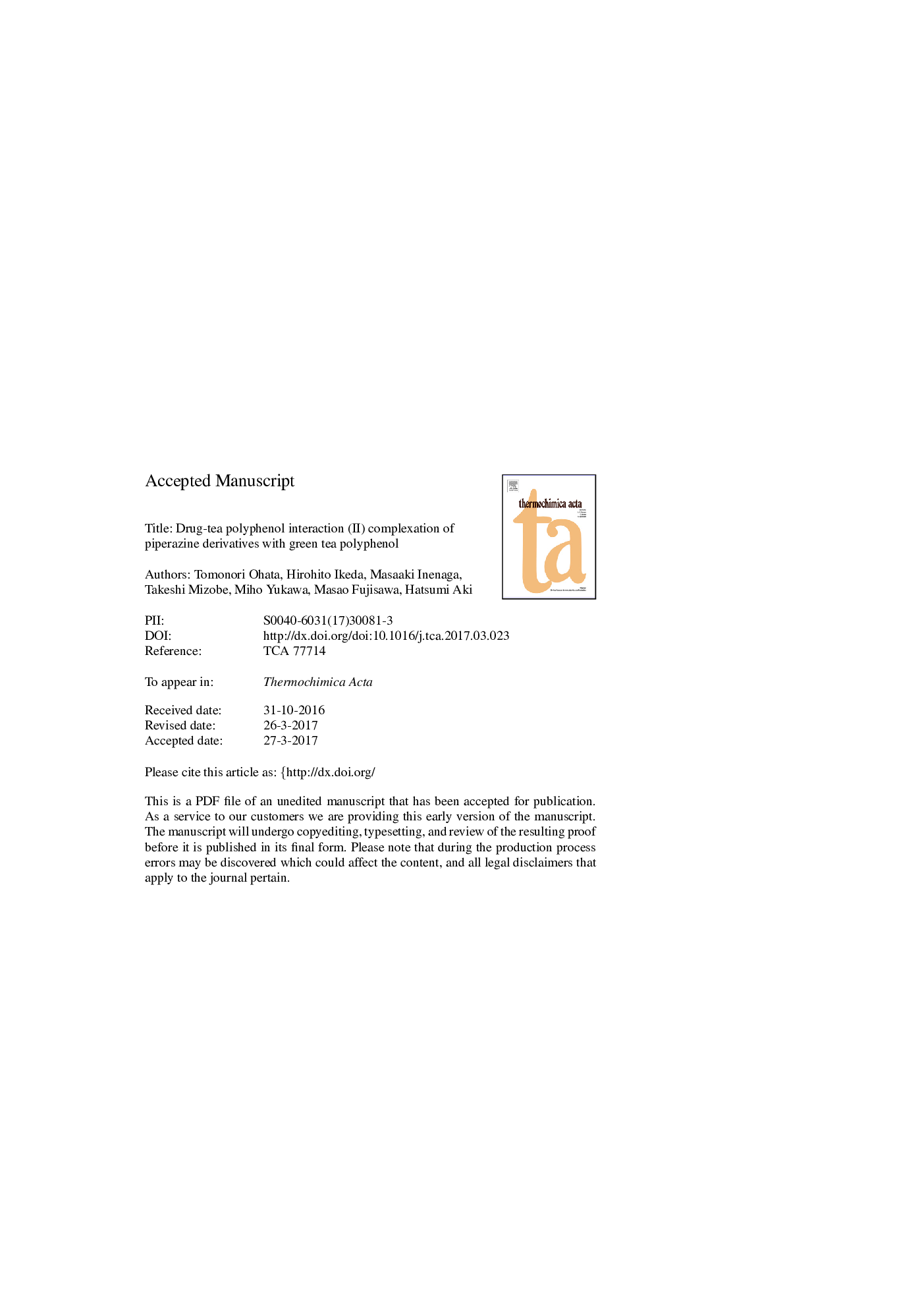| Article ID | Journal | Published Year | Pages | File Type |
|---|---|---|---|---|
| 4995892 | Thermochimica Acta | 2017 | 32 Pages |
Abstract
Complex formation between piperazine derivatives (PD) and green tea polyphenols (GTP) in an aqueous solutions and the mechanism were studied by isothermal titration microcalorimetry and molecular modeling study. Lomerizine dihydrochloride (LMZ), cetirizine dihydrochloride (CTZ) and hydroxyzine dihydrochloride (HXZ) were used as PD, and (â)-epigallocatechin gallate (EGCg) and (â)-epigallocatechin (EGC) were used as GTP. The mixed solutions of PD (except HXZ) and EGCg were cloudy because an insoluble complex was formed, and PD remaining in the solutions were approximately 30-60%. LMZ and CTZ formed complexes with EGCg at a 2:1 molar ratio, and the thermodynamic parmeters were ÎGÂ =Â â23.9Â kJÂ molâ1, ÎHÂ =Â â22.6Â kJÂ molâ1 and TÎSÂ =Â 1.3Â kJÂ molâ1Â for the LMZ-EGCg system and ÎGÂ =Â â23.0Â kJÂ molâ1, ÎHÂ =Â â21.5Â kJÂ molâ1 and TÎSÂ =Â Â 1.5Â kJÂ molâ1Â for the CTZ-EGCg system. The mixed solution of HXZ and EGCg was not cloudy, and approximately 100% of HXZ remained in the solution. On the other hand, the residual rate of PD in the solution did not decrease after mixing with EGC. No heat of the reaction was observed in HXZ-EGCg and PD-EGC systems. It was clarified that hydrogen bond formation between the nitrogen atom of the piperazine ring in a molecule of PD and the hydroxyl group of galloyl ring of an EGCg molecule played an important role in stabilization of the complexes.
Related Topics
Physical Sciences and Engineering
Chemical Engineering
Fluid Flow and Transfer Processes
Authors
Tomonori Ohata, Hirohito Ikeda, Masaaki Inenaga, Takeshi Mizobe, Miho Yukawa, Masao Fujisawa, Hatsumi Aki,
